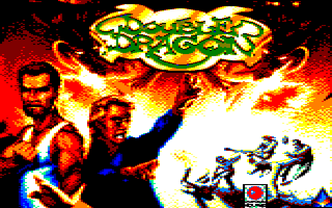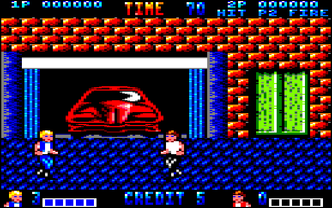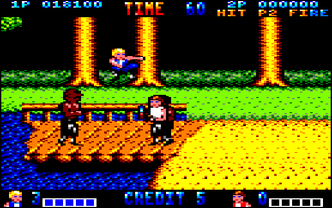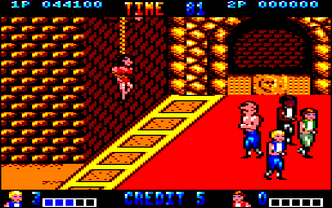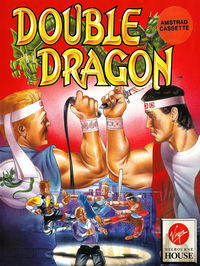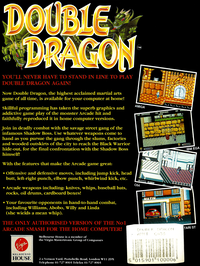Navigation:
Double Dragon Amstrad CPC
This game entry is not "published" yet and will not appear in game browers by default! (Edit and set publish = 1)
YOU'LL NEVER HAVE TO STAND IN LINE TO PLAY DOUBLE DRAGON AGAIN!
Now Double Dragon, the highest acclaimed martial arts game of all time, is available for your computer at home!
Skillful programming has taken the superb and addictive game play of the monster Arcade hit and faithfully reproduced it in home computer versions.
Join in deadly combat with the savage street gang of the infamous Shadow Boss. Use whatever weapons come to hand as you pirsue the gang through the slums, factories and wooded outskirts of the city to reach the Black Warrior hide-out, for the final confrontation with the Shadow Boss himself!
With the features that make the Arcade game great:
Offensive and defensive moves, including jump kick, head butt, left-right punch, elbow punch, whirlwind kick, etc.
Arcade weapons including: knives, whips, baseball bats, rocks, oil drums, cardboard boxes!
Your favourite opponents in hand-to-hand combat, including Williams, Abobo, Willy and Linda (she wields a mean whip) THE ONLY AUTHORISED VERSION OF THE No.1 ARCADE SMASH FOR THE HOME COMPUTER! — Cassette cover
Double Dragon (ダブルドラゴン Daburu Doragon?)[2] is a 1987 beat 'em up developed by Technōs Japan and distributed in North America and Europe by Taito Corporation. The game is a spiritual and technological successor to Technos' earlier beat 'em up, Nekketsu Kōha Kunio-kun (released outside of Japan by Taito as Renegade), but introduced several additions such as two-player cooperative gameplay and the ability to arm oneself with an enemy's weapon after disarming them. Double Dragon is considered to be one of the first successful examples of the genre, resulting in the creation of two arcade sequels and several spinoffs, as well as inspiring other companies in creating their own beat 'em ups.
Home versions of the game were released for the Nintendo Entertainment System, Sega Master System, Atari 2600, Atari 7800, Atari ST, Amiga, Amstrad CPC, Commodore 64, Game Boy, Genesis/Mega Drive and Atari Lynx, among other platforms during the series's height of popularity.
Source:Wikipedia
